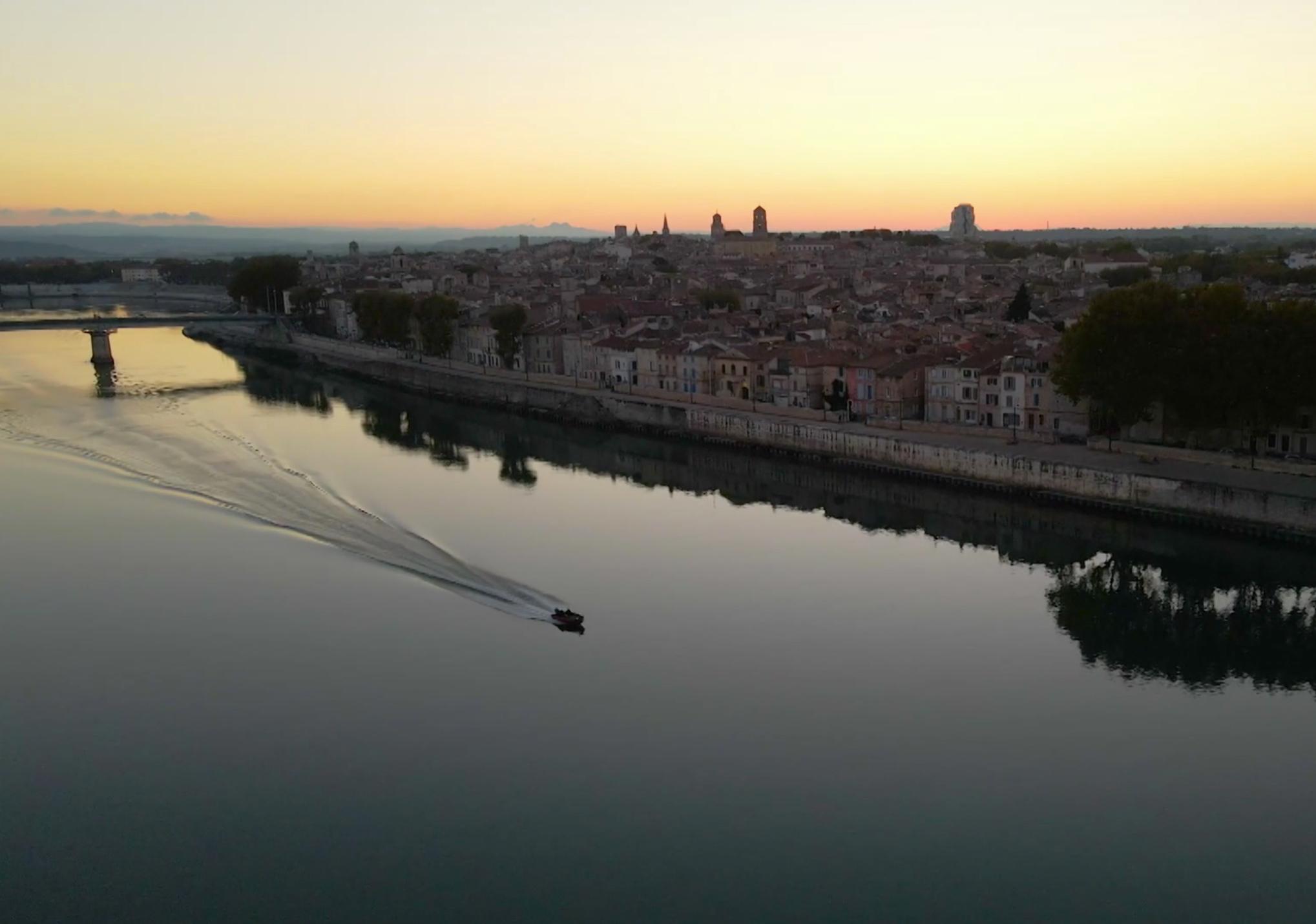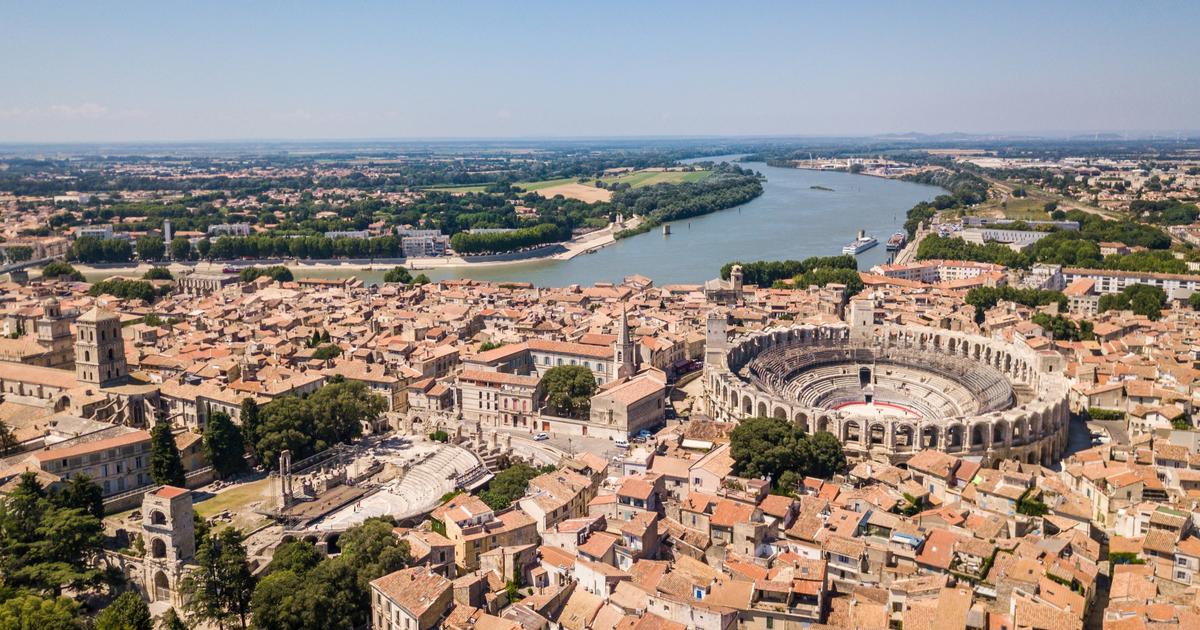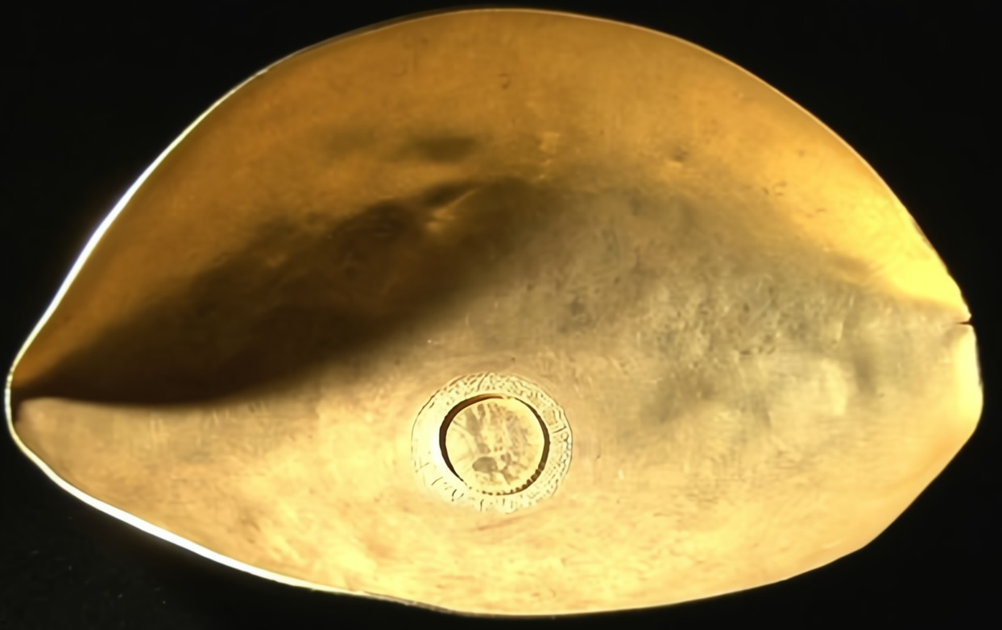In Arles (Bouches-du-Rhône), the greenish waters of the river, which flows indolently towards the Mediterranean, seem impenetrable.
The archaeologist Luc Long stares at the surface, as if he were looking for an invisible treasure.
Invisible but very real.
A Roman boat has been lying since the 4th century AD at a depth of twenty meters.
We examine the opaque water.
Luc Long knows where to look, but won't say more.
Come on, a clue: it is located a stone's throw from the large modern bridge spanning both banks of the Rhône.
A little further to your left.
That's it, you're burning ...
Luc Long, archaeologist, specializes in underwater excavations.
He hopes to soon be able to set out again to discover this wreck.
LP / Fabien Malot
This specialist in underwater excavations with a cicada accent does not want to play this time.
On April 1, the premises of the Voies Navigables de France (VNF), which it uses to store equipment and the results of its research, were burgled.
Forced windows.
Five days later, rebelote.
This time the intruders went through the garage door.
They left with a few amphorae and ceramic fragments.
The police went to the scene, a complaint from the VNF has just been filed this Friday for "vandalism" and "violation of private property", an investigation will be opened ... Luckily, most of the objects were already no longer within the walls of VNFs, but in safer public buildings.
"More hassle than harm, but this is the first time that this has happened to me in a forty-year career", confides, annoyed, this CNRS researcher, attached to the University of Nîmes.
The looters watched him through binoculars
According to him, the rarity of this theft could be explained by the broadcast, a few days earlier, of a long (and fascinating) documentary on France 5, "The treasure of the Rhône", retracing his latest research on the Roman wreck and its precious cargo.
“The locals were identifiable, but not the dive site.
During the shooting of the film, we did everything to cover up the issue, to prevent him from being spotted.
The burglary at least had the merit of serving as an alarm.
A warned archaeologist worth two, it is now at the bottom of the river that all concerns are concentrated.
“Pirates should not be used.
They are often fantastic divers, who take more risks than us.
They can operate at night, without being detected.
Paradoxically, we can see a little clearer in the water than during the day.
"
The diver of “67 or 68 years old, I don't really know anymore” - a shame for an archaeologist spending his life dating his discoveries - speaks from experience.
He has accumulated 10,000 hours of “flight”, or 416 days with a regulator screwed into his mouth!
Since his first wreck in 1979, Luc Long has explored two hundred and fifty.
He knows how much they love looters, especially in the Mediterranean, where he webbed for a long time before spawning in the Arles Rhône.
The excavations had to be stopped in the fall of 2018. DR
In 2007, while his team was recovering the so-called bust of Julius Caesar - which made it famous worldwide and the subject of an exhibition at the Louvre - a mole observed them through binoculars from a barge, and informed accomplices. All these beautiful people had ended up being spotted, wiretapped, and the affair ended with a police raid "GIGN style", remembers the spy. “I'm sure of one thing: if they can figure out where the boat is, they're not going to get in the way. "
But why fear pirates when the wreck has already sparked a prospecting mission and even a documentary?
“Because everything remains to be discovered on this site,” he ignites.
Its flow is accelerating: “We could not go to the end, but I am convinced that we have only seen the tip of the iceberg.
It is a real treasure.
The word, for once, is not overused.
Of all the ancient wrecks I've worked on, this is the only one that carried gold.
To avoid shipwrecks, the Romans preferred to transport the gold by road, under good escort.
"
"Archaeologists, it's easier to rob than a bank"
To understand what is at play in this dark part of the Rhône, we have to go back to October 2018. At that time, Luc Long had already unearthed twenty-three wrecks, all on the shore. right of Arles. The prospecting mission on behalf of the DRASSM (department of underwater and underwater archaeological research) took him this time to the left bank, where the city was founded by Julius Caesar in the 1st century BC, with its theater, thermal baths and arenas. About 50 m from the shore, he and his team discover a Roman barge ballasted with tiles, which centuries of current and gravel have rolled.
As you sweep the sediment with your hand, silver bars (which will prove to be 99.5% pure) appear in front of their mask.
“There, we said to ourselves that we were on the hook and that we had to prevent the news from spreading.
Only a few divers are told.
Archaeologists in coveralls are easier to rob than a bank.
"
The search area is organized like a crime scene, crisscrossed with multiple squares delimited by ribbons.
They are not at the end of their surprise.
A torque (necklace), a superb belt buckle of 50 g of gold, a handful of solidus (4 g gold coins) including a 20 g medallion valued at 480,000 euros.
They also harvest around 850 bronze coins, half a ton of copper platelets ...
With each descent into the 20m pit where the Roman barge sank, thrills are guaranteed.
Not just because of the 3m catfish that can “play” with their fins, or the water starting to cool in this fall 2018.
Luc Long drew the wreck which lies 20 m deep, protected by catfish.
DR
While the yellow vests block the surrounding roundabouts, the Rhône gets angry, swells, darkens.
“As if he was refusing us.
To dive, you need 30 cm of visibility.
There, we couldn't see more than 10!
It is very quickly dangerous.
»After half a dozen dives, Luc and his family stop the excavations, death in the soul.
They hope to resume them as soon as the river will be practicable again, in the summer of 2019, but "everything is ganged up against us", still laments the university.
The administration's funds arrived late, the river was unmanageable ... And in 2020, the Covid pandemic blocked the work of the divers ... on the surface.
"When I think of everything that we have already put together by scraping by hand, without having taken out any sediment vacuum cleaner, I tell myself that the rest promises a lot ... unless the pirates are faster", alarmed the researcher, who “pawns with impatience”.
Immerse yourself in ancient history in the time of Constantine
While waiting for the "real excavations to begin", the scientific investigation is progressing in the open air, thanks to analyzes carried out in various laboratories.
A fascinating dive into the past.
What is “Arles-Rhône 24” - its little name - doing on the left bank, when the 23 wrecks discovered since 2004 have all been on the right bank, where the ancient river port stretched?
The little treasure hunt leads first to Jean-Claude Thiry, president of the European Center for Numismatic Studies, in Brussels. None of the hundreds of coins, bronze or gold, were minted after 340 AD. Another clue: most are in the effigy of Constantine II, Roman emperor who reigned only three years, from 337 to 340. “This sheds light on the date of the shipwreck”, deduces Luc Long, who is advancing in the enigma as one would play at Cluedo.
On the death of his father, Constantine the Great, the first emperor to favor the Christian religion, the empire was divided into three.
Constantine II, the eldest, sits at the age of 20 on the throne of his father who had made Trier (present-day Germany) his capital.
He reigns over Gaul, Brittany, Hispania, and keeps guardianship over his young brothers: Constant inherited Italy and Africa.
Constance II, of Asia.
Very quickly, a succession conflict broke out between the first two offspring.
Constantine II marches on Rome, where his rebellious brother sits, and falls into an ambush in northern Italy.
By taking supreme power, Constant erases as much as possible the vestiges of the power of the one he has just killed.
"A
damnatio memoriae
, a sort of condemnation to oblivion", decrypts Luc Long.
Most of the pieces discovered, in gold or bronze, bear the effigy of Constantine II.
DR
This is only one lead, but when you are a frogman and an archaeologist, you have to take the plunge.
“One can think that Constant sent his fiscal agents to recover gold, silver, and all that could allow him to manufacture coins, gifts, medals… but this time in his effigy.
"
By the way, the new strongman of the empire renames Constantina (the name that Constantine the Great had given to the city where his son Constantine II was born in 316) Arelate, which will become Arles.
"Due to its location at the east / west and south / north crossroads of the empire, the city experienced a golden age in the 4th century," explains the academic Eric Teyssier, specialist in ancient history and author of
Arles la romaine.
(Alcide).
Thanks to the Rhône and the Mediterranean, it was a strategic fluvio-maritime port.
"
It remains to be seen why the barge, which was descending the Rhône from Lugdunum (Lyon), did not run aground on the right bank, on the port side, where all the other wrecks were found.
Ringing and stumbling response: the monetary workshop was on the left bank, on the town side, near the basilica where the emperor resided.
CQFD… “for now, Luc Long relativizes.
Everything can be contradicted by our future discoveries.
What if there was nothing left underneath?
“Perhaps, but the site has only been scratched, so all hopes are allowed, enthuses numismatist Jean-Claude Thiry.
This already exceptional treasure will perhaps become historic.
"
If all goes well, Luc Long will plunge again this summer, as soon as the national supervisory bodies (DRASSM and Regional Archaeological Service) have given the green light to this second excavation campaign, which will mobilize a multidisciplinary team of 25 people for two months. .
He may sit at the Academy of Sciences, Letters and Arts of Marseille, his palms are not very academic in the eyes of the administration.
"He likes the light a little too much, he tends to skip the steps," squeaks one of the guardians of national heritage.
The person, who knows he is in the viewfinder, tries not to make waves.
For Luc Long, only a small part of the treasure has been unearthed.
DR
Last pitfall, and not the least: the Rhône will have to finally let itself be tamed.
And agrees to release the mysteries of a
cold case
over which he has watched for 17 centuries.
Soon a museum in Les Saintes
No need to go to the other side of the world to live the great adventure.
It was less than a kilometer from his home, in Arles, that Luc Long made the discovery of his life by recovering almost 15 years ago the famous bust known as of Caesar, a resin replica of which stands in his living room.
Almost 15 years ago, Luc Long made the discovery of his life by retrieving a bust of Caesar.
2ASM / Chrystelle Chary
This man, who participated in the expertise of the Saint-Exupéry plane off Marseille, plunged into the Cosquer cave, and brought back funds to fill several galleries of antique art, now attaches to another big project: the museum which should open this year in Saintes-Maries-de-la-Mer (Bouches-du-Rhône).
It will be in part the fruit of his research. They brought to light a Rhône / Mediterranean access (now submerged) which was made by the old arm of Saint-Ferréol, in front of the Saintes. “We have identified fifty wrecks there, victims of currents and sandbanks, in this mouth. So there was not only the large port of Fos-sur-Mer, but a very busy outer port in the Camargue, reveals the archaeologist.






